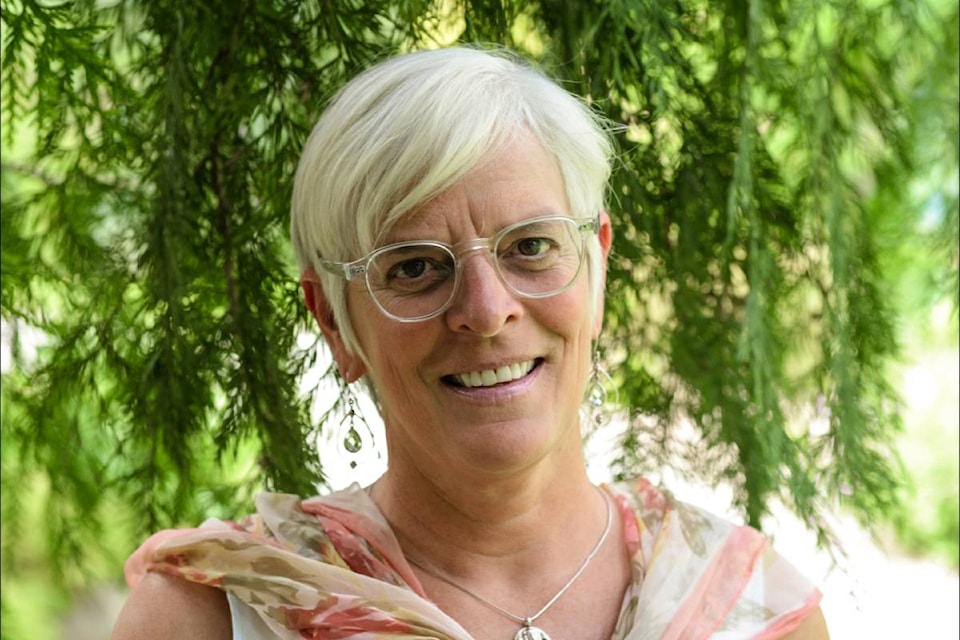By Eileen Delehanty Pearkes
It was a banner year for kokanee in the West Arm, with close to the highest abundance levels ever recorded. Locals visiting the spawning channel at Kokanee Creek reveled in the size and numbers of the fish. Ducks (who delight in the eggs), bears and raptors all ate their fill this year. The bonanza is due to increased zooplankton (food) flowing downstream from Kootenay Lake, and a sustainable harvest for sport-fishing in the West Arm.
While much cultural attention goes to the managed spawning channels, there is a wild and growing success story in the West Arm: the resurgence of the shore-spawning kokanee. These kokanee prefer to lay their eggs in shallow, shoreline water up to a metre deep, not in rapidly flowing streams. Until 2003, only a few locals seemed to know about them.
That was the year when provincial fisheries employees got a call from a curious resident. He had seen kokanee building nests and laying eggs along the shoreline at the end of MacGregor Road.
Since then, the government has made efforts to understand more about these renegade kokanee and their needs. This year’s survey of shore-spawning redds (or nests) revealed over 1,000 places where the fish deposited their eggs in Six Mile bay, alone. Numerous redds were also found at McDonald’s Landing and smaller numbers all along the arm.
The increase is due in part to changes in how B.C. Hydro and Fortis manage the water flowing past us every day.
The West Arm of Kootenay Lake was, originally, formed by a natural rock shelf at Grohman Narrows. This rock operated like a giant cork, slowing the westward passage of spring snow-melt and creating a lake-like atmosphere at other times of the year.
Before the shelf was blasted and dredged in the 1930s, winter ice was sometimes thick enough to drive across. That constriction also frequently caused extreme floods, such as the great one of 1894 when water covered the railway tracks in Nelson.
After the construction of Corra Linn Dam west of Nelson in 1932, the International Joint Commission (IJC) agreed to maximum water levels on Kootenay Lake and its arm in 1938. That, followed by the construction of Libby Dam in 1973, have both greatly stabilized the shoreline, making it possible to live safely on land that was once flood-plain. Without these dams, residents today could expect peak water levels from six to 10 vertical feet higher.
Predictability of water levels has come at a price, however, for the non-human shoreline inhabitants.
Old timers have shared stories with me about fresh water clams and mussels, and a host of frogs and bugs that once thrived and are now a great rarity. Also affected have been the shore-spawning kokanee. The Arm’s tightly managed water levels keep the shoreline higher than natural in autumn, decrease it gradually in early winter, then increase it in January.
In early spring, the IJC order lowers the water dramatically to make room for the freshet, and yet keep the floodplain (relatively) dry.
This controlled hydro-graph is much lower in spring and higher in autumn than it naturally would be. The shore-spawning kokanee evolved their behaviour before dams. They counted on the natural hydro-graph, when early spring and autumn levels were closer to the same. Over and over again, for many decades, the shore-spawners have continued to deposit their eggs in shallow water where they find it. When the IJC order drops water well below natural levels in spring, emerging fry are stranded.
In 2012, provincial fisheries managers asked B.C. Hydro, Fortis BC and Columbia Power Corp. to manage water levels in the Arm to allow a drop in late September and early October, the peak time for shore-spawning.
This allowed the spawners to deposit eggs in a place closer to the pre-set spring shoreline. The positive results have created fresh enthusiasm for these special kokanee. Some believe these fish may be more resilient to climate change than their stream-spawning cousins.
When shoreline conditions are right, they appear to have a higher survival rate over those that exit the spawning channels, though science does not yet fully understand why.
It’s worth noting the willingness of B.C. Hydro and other utilities to shift their practices in order to support local fish. Another part of the good news story. May there be more like it!
Eileen Delehanty Pearkes lives in Nelson. Selected as Nelson’s 2017 Cultural Ambassador, she has spent 25 years exploring the region and its cultural history and authoring various books: The Geography of Memory, The Inner Green (co-author K.L. Kivi), River of Memory (co-author William Layman), The Heart of a River and most recently A River Captured. This article represents her own views.
Earlier columns by Eileen Delehanty Pearkes
The Kootenay Lake Fishery and why the kokanee are cranky
The Living Landscape: ‘It’s tough to be God’ — A story of wobbling fish populations
The Kootenay Lake Fishery: More funds needed for ‘boots in the boat’
